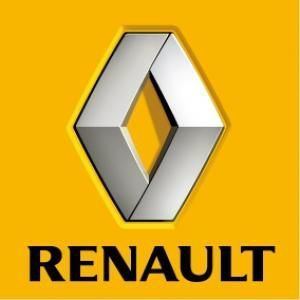Key people Olivier Murguet (CEO) | Industry Automotive Founded 1997 | |
 | ||
Production output 241,567 vehicles (2012) Revenue R$9.8 billion (US$4.82 billion) (2012) Profit R$440.2 million (US$194.7 million) (2012) CEO Fabrice Cambolive (4 Aug 2015–) Profiles | ||
Renault do Brasil ([ʁeˈno du bɾaˈziw]), formerly Renault do Brasil Automoveis, is the Brazilian subsidiary of the French car manufacturer Renault. It was established in 1997, and is the fifth country's automaker by sales. In 2012, Brazil was the second largest market of Renault.
Contents
History
Renault was present in Brazil since the 1960s, through a partnership with the American company Willys Overland, which produced under license cars of the French automaker. At the end of 1961 Willys introduced the Interlagos, a copy of the Alpine A110, producing also other models, like the Dauphine and the Dauphine Gordini, until 1968. That year Willys Overland sold its operations to Ford do Brasil, which inherited the "project M". This project, developed by the Renault and Willys partnership, resulted in the launch of the Ford Corcel, a car whose style can be considered, roughly, an Americanized version of the Renault 12 with a CH1 engine.
In the 1970s, Brazil ended car imports and Renault did not return until 1992, when the company's Argentinean and Brazilian operations were taken by the holding company COFAL SA. In 1997, Renault retook the control of its operations in Argentina and Brazil. In Brazil, Renault formed the subsidiary Renault do Brasil Automoveis. In 1998, it opened the Ayrton Senna manufacturing complex in São José dos Pinhais, Curitiba. With the aim of financing the construction of the facilities Renault agreed to give the State of Paraná a 40 percent stake in exchange of 1.2 billion dollars. This stake would be mostly returned to Renault after seven years. Despite its success, the agreement found some political dissensus.
Operations
The Ayrton Senna complex, with 2.5 million square meters, consists of a passenger car plant (bodywork and assembly) opened in 1998, an engine plant, Mecanica Mercosul, opened in 1999, and a light commercial vehicle (LCV) plant, operated jointly with Nissan.
In August 2011, Renault announced an investment plan of R$1.5 billion for expanding the production to 320,000 vehicles by 2015. In 2011, the Brazilian growth of Renault was seven times bigger than the market average, with 194,300 cars sold and a market share of 5.7 percent. That year the company produced 256,200 cars and vans and 332,000 engines.
A 41% of the cars, engines and parts produced are exported, with destinations such as the Renault subsidiaries in Argentina (22%), Colombia (13%), Romania and Mexico (4%).
On 2 August 2012, Renault announced its plans to expand Mecanica Mercosul's production output a 25% by 2013.
Renault Design America Latina
In April 2008, Renault opened in São Paulo its first design center in the American continent. It designed the Sand'Up concept, which was unveiled at the 2008 São Paulo Motorshow, It also conceived the Sandero Stepway concept in 2010 and collaborated in the Duster design. The center also designed the D-Cross (a Duster-based concept), which was unveiled at the 2012 São Paulo Motorshow. The design studio also modified the production Sandero and Logan to adapt them to the local markets.
Current Cars manufactured
Former Cars manufactured
Ownership
As of 2011, 80.29 percent of the company was controlled indirectly by Renault through the holding Compagnie Financière pour L'Amérique Latine (COFAL), which also had shares in Renault Argentina and is mainly owned by the automaker. A 19.56 percent was owned directly by Renault of France. The State of Paraná held the remaining shares.
